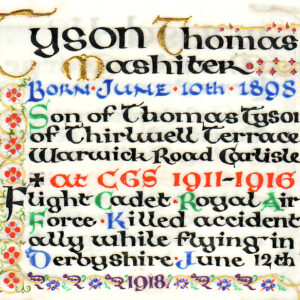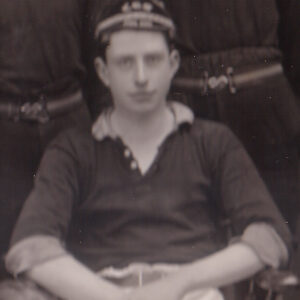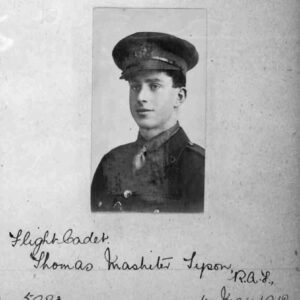Key Information
Name: Thomas Mashiter Tyson
DoB: June 10 1898
Regt: Second Lieutenant RAF 121 Squadron
DoD: June 12 1918
Academic Career: CGS 1911- 1916
Other: Address while at school: 6 Thirlwell Terrace. At time of death address given as 219 Greystone Road, Carlisle.
Biographical Information:
-
Thomas Mashiter Tyson was born in Liverpool the only child of his parents Thomas Tyson and Minnie Barber. His father was an engineer surveyor from Ulverston, the son of a grocer, and his mother was the daughter of shopkeepers from High Leigh, Cheshire. The name Mashiter was the maiden name of his paternal grandmother. Thomas’ father was a church warden at St Aidan’s, Carlisle.



